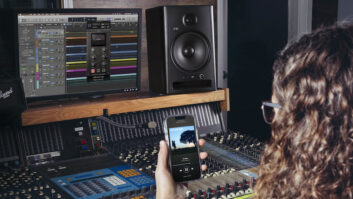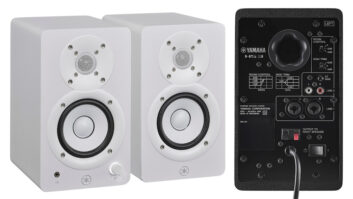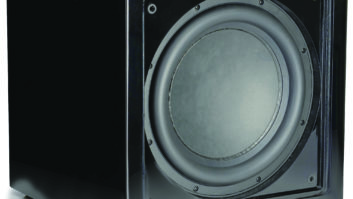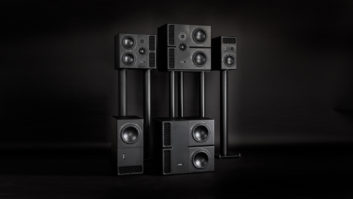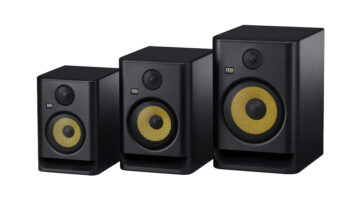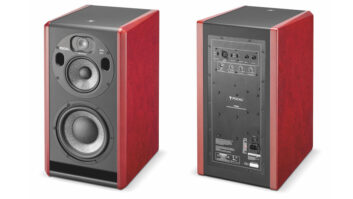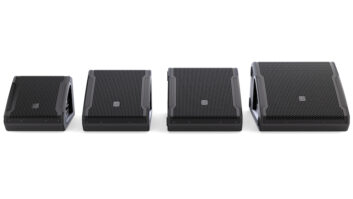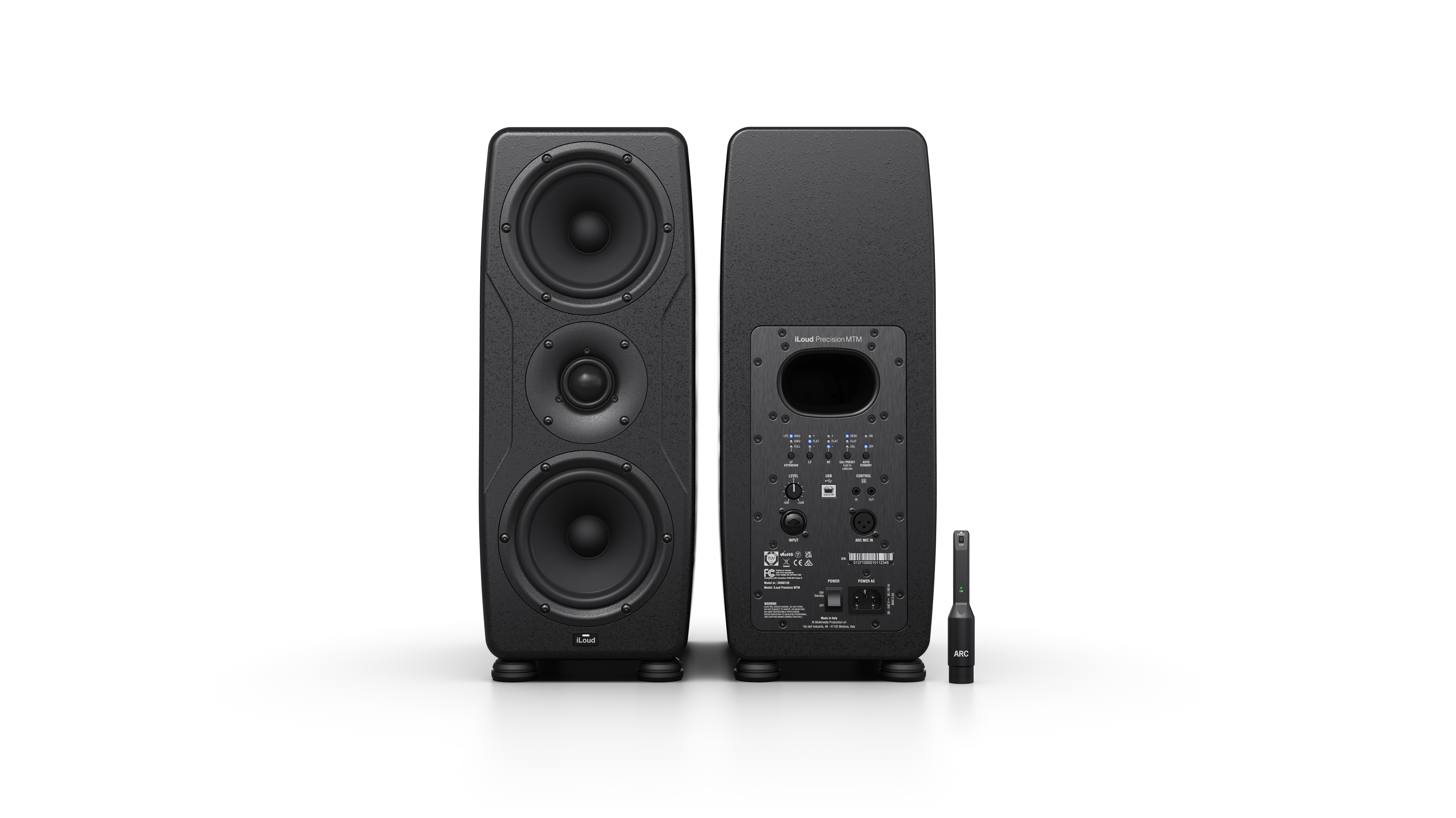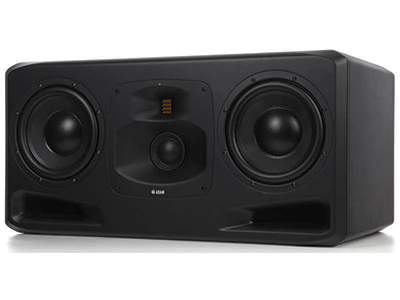
Marking somewhat of a burgeoning trend between the October 2016 AES Show in Los Angeles and the January 2017 NAMM Show in Anaheim, an impressive number of premium-quality studio monitors have been unveiled to the pro audio market. Many of these are three-way powered studio monitors, joining other well-received three-way debuts over the past few years.
Arguably, discriminating audio content creators are increasingly more concerned about hearing midrange as their mastering engineers do; perhaps more production and mix engineers are mastering their own work. Meanwhile, other new high-end two-way offerings are packed with unique and intriguing innovations. As such, options abound for golden-eared engineers in need of the latest and greatest among our industry’s top studio monitor brands. Below is a collection of those most worthy of consideration.
The third generation S Series is ADAM Audio’s new flagship active studio monitor line, comprising five models and packed with superb proprietary technology. At the top of the series is the impressive S5H three-way model featuring the German handmade Precision S-ART ribbon tweeter with HPS waveguide, a 4-inch DCH (Dome Cone Hybrid) carbon midrange driver with MPS waveguide, and dual 10-inch ELE (Extended Linear Excursion) Hexacone woofers. Key specifications include a SHARC-chip based DSP engine, total power (RMS) of 1,800 W, 24 Hz-50 kHz frequency response ≥131 dB maximum SPL (per pair @ 1m), ≥131 dB maximum SPL (per pair @ 1m), and AES3 digital inputs alongside various expansion options. Designed to sit horizontally, a vertically arranged three-way—the S3V, introduced at the NAMM show—is also available.
Having launched the buzzed-about SCM45A Pro three-way active studio monitor, British monitor manufacturer ATC is experiencing success due to the model’s distinctive yet “honest” sound and well-conceived size and form, allowing it to fit mid-to near-field monitoring applications. The SCM45A Pro features dual 6.5-inch drivers for deep bass response and increased SPL, ATC’s proprietary dual-suspension tweeter—reportedly the result of six years of R&D—and much more. ATC’s attention to detail and world-class build quality has notably created a worldwide group of fans.

Launched at the 2017 NAMM Show, the Footprint 01 three-way powered near-field is a smaller, more affordable Barefoot Sound monitor, yet it remains a “high-end” choice for savvy audio engineers desiring those signature Thomas Barefoot features such as Dual-Force opposing subwoofers, the dual ring radiator tweeter and Multi-Emphasis Monitor Emulation technology—just like the MicroMain and MasterStack lines. The Footprint01 features dual 8-inch paper cone subwoofers, a 4-inch aluminum-cone midrange driver and a 1-inch dual ring-radiating tweeter; a two-way DSP crossover paired with dual Class D amplifiers delivering 500W and 150W to the subwoofers and midrange and tweeter, respectively; a 45 Hz-40 kHz (± 1dB) frequency response, and much more.
Distributed in the U.S. by Yorkville, Dynaudio PRO recently unveiled its latest addition to the LYD studio monitor range—the LYD 48 three-way midfield active monitor—which couples an 8-and a 4-inch woofer with a 1-inch tweeter. It is designed and built in Skanderborg, Denmark. Each of the woofers and the tweeter are powered by a dedicated Class D amplifier, effectively delivering 80W, 50W and 50W of power per monitor, respectively. The amp features a 24-bit, 96kHz signal path, selectable input sensitivity and the same Standby Mode as the original LYD speakers. Further, the new three-way version features Bass Extension, allowing switching between the default and maximum bass or maximum volume settings; these changes affect the low-end response while linear frequency response remains intact, offers promotional materials. The LYD 48’s Sound Balance option is effectively a “tilt filter, tipping the tonal balance gently,” Dynaudio confirms. “It emphasizes one end of the spectrum while decreasing the opposite end by the same amount.” Touted as different from most shelving filters, it is designed to alter the frequency response without interfering with phase. Sound Balances toggles between “Bright” and “Dark” labeled settings.

British studio monitor experts PMC have announced two additions to its next-generation Main Monitor range of active Advanced Transmission Line (ATL) loudspeakers, the MB3 and BB6. Both are designed for freestanding or soffit-mounted use, are available as single-or twin-cabinet (XBD) versions, and offer digital and analog inputs. Key features include the same proprietary Class D amplification from PMC’s QB1-A main studio monitor; and hand-built, precision-matched 34mm soft-dome tweeter and 75mm fabric midrange driver paired with the Radial low-frequency driver. The MB3 features a 12-inch Radial driver; the BB6 features a 15-inch Radial driver; as such, these provide a flat response down to 20 and 17 Hz, respectively. Both the MB3 and BB6 are available as single-cabinet (MB3-A and BB6-A) and twin-cabinet (MB3 XBD-A and BB6 XBD-A) active versions; the latter provides 3 dB more headroom.

French studio monitor manufacturer Focal continues to create new customers with its Trio6 Be three-way studio monitor, which sits midway in price between the SM9 and the Twin6 Be. Most notable for its rotatable baffle, allowing the speaker to be oriented in four different positions—vertical with woofers on top, vertical with woofers on bottom, horizontal with woofers outside or horizontal with woofers inside—the Trio6 Be features two 8.5-inch round openings; an 8-inch woofer fills the first opening and the second is filled with a rotatable aluminum baffle incorporating a 5-inch midrange/woofer. A 1-inch inverted dome beryllium tweeter—the same tweeter in Focal’s SM9—and a pair of ports is also included.
One of two quite visually-striking monitors in this collection, the acoustically coaxial three-way 8351A is packed with innovative Genelec-pioneered technologies, including internal amplification; the aluminum Minimum Diffraction Enclosure; Directivity Control Waveguide; Iso-Pod vibration isolation/tilter; rear internal reflex tube/port; digital and analog inputs; the Smart Active Monitor system (SAM) for Genelec’s Loudspeaker Management system (GLM); and much more. According to Genelec, the directivity pattern of the low frequencies in the 8351A is equivalent to about an 18-inch driver, if arranged vertically; its unique oval woofers—with flat plane surfaces over a honey-comb-like infrastructure—measure 8.5×4 inches and are key to its design. Other key features of this Finnish wonder include the 5-inch midrange and 3/4-inch tweeter, AutoCal in-room system calibration, a maximum (peak) SPL of ≥ 123 dB (per pair @ 1 m), and notably excellent on-or off-axis neutrality.

Modern Audio Design’s MAD-Max two-way active near-field monitor is a 17×8.5×11.75-inch reflex front-ported design featuring dual 180W amplifiers, 1.06-inch Sonolex soft-dome tweeter, 6.5-inch Dynaweave composite cone woofer, and an amalgamation of other key features. A 28/56-bit, 50 MIPS digital audio processor core provides crossover filtering. Its cabinet is constructed from differing thicknesses of high-grade MDF, all heavily damped to reduce cabinet resonances. According to the company, its frequency response is 35-25k Hz (±5db). Notably, producer/mixer Ron Saint Germain is a proud user of the MAD-Max, having worked with Modern Audio Design principals Richard Gerberg and Graeme Bridge during its R&D process; Saint Germain attests that, having never been a fan of active near-fields, he’s found a lot to love in the MAD-Max.

The second visually unique monitor featured here, MunroSonic’s Egg100 is the smaller sibling of the well-received Egg150, both of which are designed and manufactured in the UK by Munro Acoustics and Sonic Distribution. With a smaller body than the Egg150 and featuring a 4-inch LF driver, the Egg100 system comes with a separate control unit and amplifier with passive analog crossovers, LF and HF trim pot EQ for location setup, and integrated Class A headphone amplifier. Other key features include its unique single-hull construction, making it rigid and resonant neutral, offers MunroSonic; no internal standing waves; a custom-designed speaker holder for adjustable vertical alignment, allowing vertical and horizontal placement; and more.

Neumann utilized the 2017 NAMM Show to launch its KH 80 DSP studio monitor to the American marketplace, notably Neumann’s first studio monitor with digital signal processing. With Neumann.Control software on the way, the KH 80 DSP two-way near-field studio monitor will be able to fully calibrate to any studio environment, whether automatically (Precision Alignment), via a simple Q/A (Guided Alignment), or user-adjusted via built-in 8-band fully parametric EQ (Manual Alignment). Key specifications of the KH 80 DSP include 4-and 1-inch LF and HF drivers powered by 120 W and 70 W amplifiers, respectively; a 57 Hz – 21 kHz (±3 dB) frequency response; 108.8 dB maximum SPL; and a compact 9.2×6.1×7.6-inch and 7-pound, 8-ounce size and weight, respectively.

Designed by Ocean Way Audio’s legendary founder, Allen Sides, the HR4 Reference Monitor is an integrated two-way dual-horn active midfield delivering a 100-degree by 40-degree dispersion “window” via its 8-inch LF driver and 1-inch HF driver; a three-way model is reportedly available. Built to deliver a frequency response of 35 to 25k Hz, the HR4 provides a 116 dB maximum SPL between channels. It measures 24x14x14 inches and weighs 45 pounds. Due to its low-reaching frequency response, Ocean Way Audio confirms that it needs no subwoofer for a powerful, truly full-range performance.

Quested boasts its V3110 three-way as the “world’s most accurate midfield monitor.” While any such claim is debatable, it is a fact that the V3110 is Quested’s most powerful active monitor to date, featuring dual 150 W Class A/B amplifiers for its HF and MF sections, and a 700 W “Ultra Cool” Class D amp for its long-throw custom 10-inch driver. Other specifications include a 30-20k Hz (±2 dB) frequency range; 120 dB maximum SPL; and a 98 lb. weight. It can be arranged vertically or horizontally.

Experiencing a bustling booth at the 2017 NAMM Show, Unity Audio touted its Boulder Mk II three-way midfield/main active monitor boasting four discrete, custom-designed Esoteric Class A/B amplifiers, and much more. Key features include dual 8-inch proprietary SEAS aluminum woofers; a dual concentric 4.5-inch ELAC midrange driver; 50 kHz folded ribbon tweeter; a 32-38k Hz (±3dB) frequency response; and Unity Audio’s striking 1.2-inch thick front baffle made of Corian. According to the company, the Boulder Mk II is expandable via dedicated Boulder Bass Extenders or if paired with Unity’s Avalanche subwoofer.

